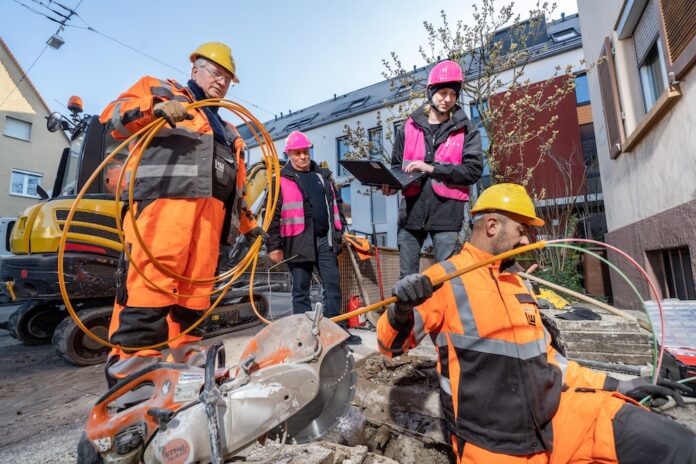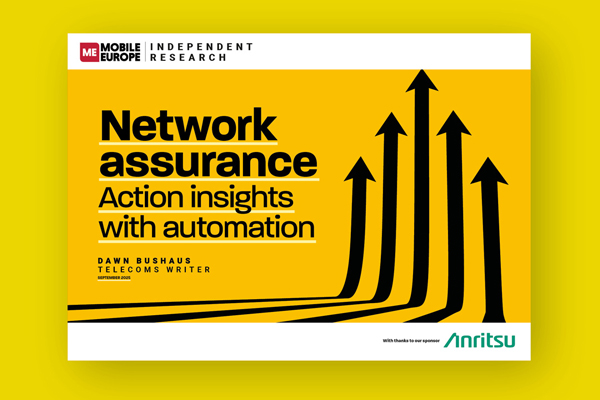The altnet group warns that requiring separate court actions for duct information and access could stall nationwide fibre deployments
A new court ruling in Cologne has reignited tensions over Germany’s fibre rollout strategy, with industry altnet group VATM warning that the decision risks stalling the country’s broadband expansion. In the latest May 2025 decision, the Cologne Administrative Court upheld Deutsche Telekom’s right to impose certain technical conditions on access to its publicly funded ducts – an outcome that VATM says could allow the incumbent to obstruct fair competition and undermine open access principles.
The case centres on Deutsche Glasfaser’s attempt to use empty conduits in rural Bavaria, raising broader questions about infrastructure sharing and the practical realities of Germany’s fibre deployment goals. And the debate is a microcosm of the broader tension in EU telecom regulation: balancing infrastructure competition with network sharing, especially in rural or subsidised areas.
To understand the latest arguments, it’s important to grasp the history of the dispute. In 2023, the regulator Federal Network Agency (Bundesnetzagentur) resolved a dispute between Deutsche Telekom and Deutsche Glasfaser, determining that Telekom must provide access to empty ducts in its publicly subsidised network segments in a couple of Bavarian municipalities.
Telekom contested this decision, arguing that the ducts were too narrow to accommodate additional cables and that the infrastructure did not fall under the open access obligations stipulated by the Telecommunications Act.
However, the Cologne Administrative Court upheld the agency’s decision in June 2024, emphasising that Telekom’s interpretation of the infrastructure’s capacity was too restrictive. The court clarified that operators benefiting from public subsidies are required to offer both active and passive network access to competitors on fair and reasonable terms. In addition, the court ruled that Telekom could not impose fees for merely preparing access offers, as this could deter competitors from seeking access.
Roll forward to the latest case this week, where the Cologne Administrative Court found that Deutsche Telekom is not obliged to provide both information and access to its subsidised duct infrastructure in a single step, potentially allowing the operator to delay competitors’ use of existing public infrastructure, in the eyes of VATM at least.
The court has instead ruled that obtaining information about existing routes and requesting access must be pursued through separate legal proceedings, which may need to be brought before different courts depending on the specific nature of each request. The result of the court seeking to define what needed to be done in the eyes of the law has inadvertently opened a new can of worms, with critics arguing that the court’s attempt to define legal pathways may have unintentionally complicated the access process.
VATM argues that this decision undermines the principle of open, non-discriminatory access to publicly funded networks and it said it could amount to de facto denial of access. The group is warning that forcing alternative providers to pursue separate legal proceedings for information and access will result in delays, higher costs and reduced momentum in fibre expansion.
“This is an unnecessary setback for fibre rollout in Germany,” said VATM managing director Dr Frederic Ufer. “The duct infrastructure funded with public money, as well as Telekom’s legacy ducts that have long since been written off, are crucial levers for accelerating fibre deployment without repeatedly having to dig up roads.”
In future, he says, each company will have to claim the necessary information and duct access through individual legal proceedings. How exactly this should be done remains unclear. “One can easily imagine how long such proceedings will take in an already overloaded German court system, and what additional costs they will entail. This ruling by the Administrative Court has clearly done a disservice to Germany’s fibre expansion,” he said.
Unreasonable conditions
VATM in essence is arguing that the court is allowing Telekom to impose unreasonable conditions for access to its ducts, especially those built with public funding. For example, observers suggest Telekom could hypothetically require that alternative providers prove in advance that cables will fit in the ducts, even when it hasn’t clearly demonstrated that the ducts are full.
VATM points out that these ducts were funded, at least in part, with public money, which comes with an expectation that the infrastructure will be openly and fairly shared. If Telekom can effectively limit access or make it burdensome, VATM reckons this undermines the policy goals of promoting competition and faster nationwide fibre deployment.
More widely, VATM fears the decision could become some form of precedent allowing Telekom and potentially other large players to obstruct competitors’ access to publicly subsidised infrastructure by citing technical or procedural excuses.
The other side
Telekom would argue that not all ducts are suitable for sharing – particularly if they are full or designed in ways that make adding more cables impractical or damaging. The operator would also claim it must retain control over its network assets to ensure reliability, capacity management and service quality – a pretty standard incumbent defence.
Further defences might include issues like network safety and technical compatibility, where without checks and balances, there is a risk of service disruption or damage to its infrastructure. Telekom would also unsurprisingly argue that duct-sharing is not always the most efficient or scalable approach and that sometimes overbuilding may be better than retrofitting existing infrastructure.
More action
VATM is calling on the federal government to urgently amend the Telecommunications Act to guarantee simple and enforceable access to Telekom’s legacy and subsidised ducts, which it describes as key to accelerating fibre deployment without repeated roadworks. “The new Federal Ministry for Digital Affairs must urgently create the right framework conditions,” said Ufer. “In the upcoming amendments to the Telecommunications Act (TKG), the principles of non-discriminatory and open access to publicly funded telecommunications lines and networks must be legally secured to ensure rapid rollout.”
VATM reckons its most recent market analysis backs up the call for speeding things up. He said it shows that Germany remains far from nationwide fibre coverage. Even the most optimistic projections estimate that by the end of 2030, only around 15 million FTTB/H connections (homes activated) will be in use.
“We are falling further behind internationally unless immediate countermeasures are taken and all available resources are mobilised to expand the fibre infrastructure,” he warned, adding that this includes, Telekom’s ducts, which, he said, lie underground like ghost networks, with their potential untapped for the benefit of the public.
Much ado about nothing
Telekom would beg to differ and just announced that in April, it provided a further 147,000 households and businesses with the opportunity to access a fibre-optic connection – equating to 7,000 connections per day. A total of 10.6 million households and businesses can now book a fibre plan with speeds of up to 2Gbps. More than 37 million premises have access to plans with up to 100Mbps, with more than 31 million able to receive speeds of up to 250Mbps.
“The VATM is making a big fuss about the verdict of the Administrative Court of Cologne. The shared use of Deutsche Telekom’s empty conduits in the subsidised expansion is common practice, as is also known in the industry,” a Telekom spokesperson told Mobile Europe. “Deutsche Telekom receives inquiries from many VATM member companies about access to subsidised infrastructure and also submits the corresponding offers.”
“However, from Deutsche Telekom’s point of view, requests for information about our conduit infrastructure should be unambiguous. In the present case, the first request from a competitor covered almost the entire area of the district of Emmendingen and thus already almost 50,000 subsidised empty conduit sections in Telekom’s network, which could have been combined to form any route. The Administrative Court of Cologne doubted the seriousness of such an application for access,” said the spokesperson.
“The court thus confirmed our view and ruled that an application for access to subsidised conduits must be sufficiently specific and not be arbitrarily broad. Only then can a corresponding offer be made,” said the spokesperson. “However, we agree with the VATM that the legal regulation for open network access can be improved in order to further accelerate fibre-optic expansion. The infrastructure atlas that the Bundesnetzagentur operates and which shows the infrastructure of all providers that can be used together seems to be a good approach.”




